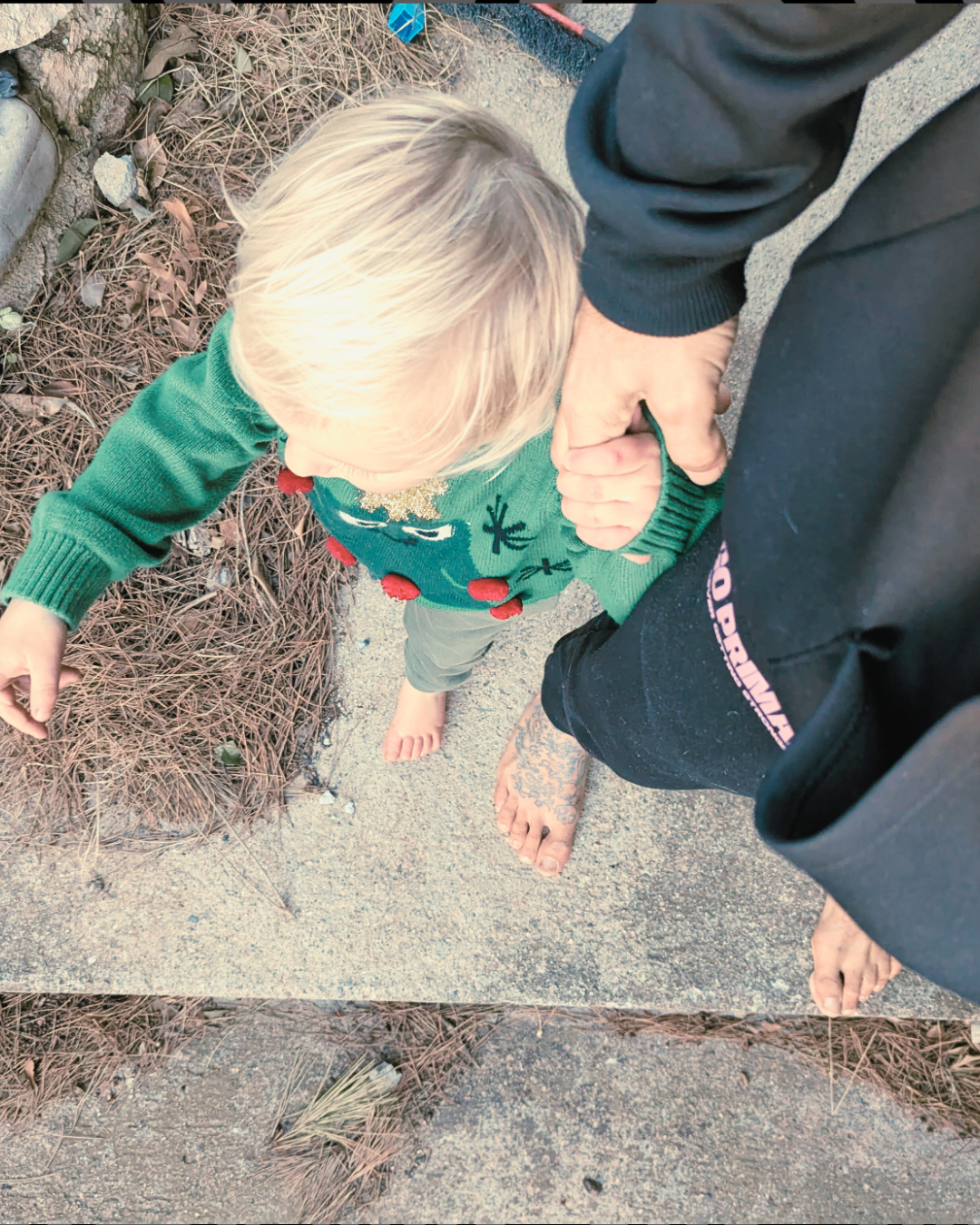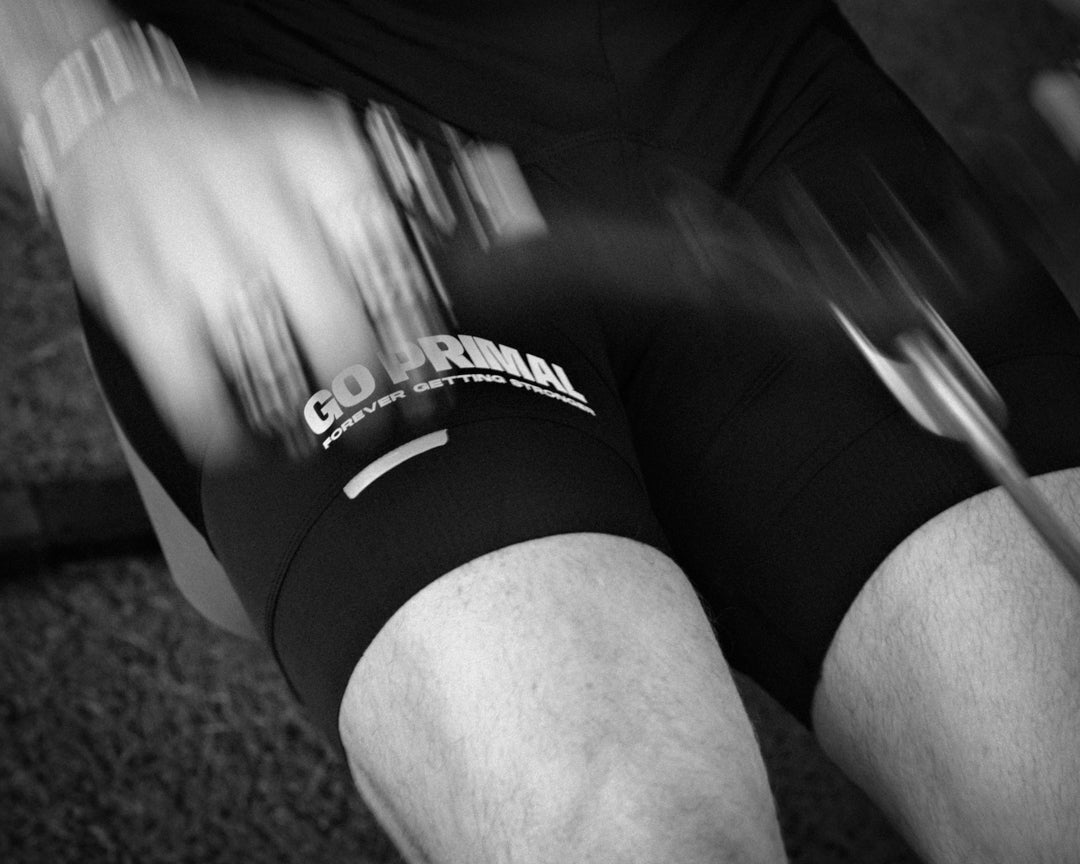
The Many Benefits of Training Barefoot
Why Foot Health Matters More Than You Think (and Why You Should Train Barefoot)
Your feet are the foundation of your body. Every lift, every run, every squat—starts from the ground up. Yet, most of us ignore this crucial piece of the performance puzzle... until pain or injury strikes.
Let’s fix that.
The Foot Trap: How Modern Shoes Are Wrecking Your Base
Look down. Chances are, your shoes are narrower than your actual foot. Those stylish kicks may look good, but they’re silently reshaping your toes, collapsing your arches, and weakening your balance.
Here’s what happens inside a narrow shoe:
-
Toes get compressed, limiting their ability to spread and stabilize you.
-
Arches begin to collapse, affecting ankle, knee, and even hip alignment.
-
Over time, you lose strength, mobility, and start compensating with poor form.
And it’s not just about pain—this can rob you of performance and long-term joint health.
👣 [See image below: the difference between a foot in a narrow shoe vs barefoot]
The Better Way: Barefoot Training and Natural Movement
Training barefoot—or with minimalist shoes that mimic being barefoot—can restore foot strength, mobility, and balance. Think of it as training the roots so the tree grows stronger.
Why go barefoot?
-
Activate the stabilizers in your feet and ankles
-
Improve posture and movement efficiency
-
Reduce risk of injury by promoting better alignment
-
Reconnect with the ground for better proprioception and balance
Barefoot ≠ Unsafe
People worry barefoot = no protection. But we’re not saying walk over glass. We’re saying train smart: start with bodyweight exercises, controlled movements, and let your feet adapt.

Simple Foot Health Exercises You Can Start Today
These are GoPrimal-approved, backed by science and simplicity:
1. Toe Spreading Drills
-
Sit barefoot and manually spread your toes.
-
Use toe spacers post-training.
-
Aim: Restore natural toe splay and nerve activation.
2. Short Foot Activation
-
Stand barefoot.
-
Without curling your toes, try to "shorten" your foot by engaging the arch.
-
Hold 5 seconds, repeat 10x per side.
3. Calf Raises Barefoot
-
Focus on slow, controlled movement.
-
Feel the tripod of the foot (heel, big toe, pinky toe) stay connected to the ground.
4. Balance Work (Single Leg Stands)
-
Stand on one leg, barefoot.
-
Progress by closing your eyes or standing on a cushion.
-
This builds neural connection and stability fast.
Real Talk: This Is About Performance and Longevity
Whether you’re chasing PRs or just want to stay pain-free as you age, foot health is your foundation. The GoPrimal way isn’t about shortcuts. It’s about building from the ground up.
Train strong. Train smart. Start with your feet.

Final Word: Ditch the Crutches
You don’t need arch support. You need arch strength.
Start slow, stay consistent, and feel the difference in how you move, lift, run—and live.
Because performance starts from the ground up.
Why Barefoot Is Good: Back to Human Basics
Our feet weren’t designed to live in shoes—they evolved for mobility, grip, and sensory feedback. For thousands of years, humans walked, ran, and hunted barefoot or with minimal protection. Modern shoes changed that.
But the foot didn’t adapt. It atrophied.
When you go barefoot, you activate over 100 muscles, tendons, and ligaments that stay dormant inside traditional shoes. You restore a natural gait, better posture, and reconnect to your environment—literally.
Going barefoot is not just “natural,” it’s necessary if you want longevity in your joints and power in your movements.
Benefits of Going Barefoot (or Barefoot-Style)
1. Stronger Feet, Fewer Injuries
Training barefoot engages the small muscles in your feet and ankles, improving balance and control. This reduces the risk of injuries like shin splints, plantar fasciitis, and sprains.
2. Better Posture and Alignment
Most shoes tilt your pelvis forward due to heel elevation. Barefoot resets your body to its neutral, biomechanically-efficient posture.
3. Improved Performance
Barefoot training builds a better “mind-foot connection.” You react faster, grip better, and move with purpose.
4. More Sensory Feedback
Going barefoot sends real-time signals to your brain about the ground. That means sharper movement, better balance, and quicker adaptation under load or fatigue.
5. Enhanced Foot Mobility
No more stiff ankles or locked-up arches. Barefoot work restores your full range of motion.
Why Training Barefoot Is a Game-Changer
In a gym or training setting, barefoot isn’t just a cool trend—it’s a tool.
-
Deadlifts feel more grounded.
-
Squats feel more stable.
-
Balance improves. Force production increases.
You get a direct connection to the floor, essential for producing power and controlling force. Plus, by ditching the cushion, you get immediate feedback if your form is off—helping you correct issues early.
The Dark Side of Narrow Shoes
Look at most modern shoes: narrow toe box, stiff sole, elevated heel.
Now look at a healthy human foot: wide forefoot, mobile arch, flat heel.
Narrow shoes deform your natural structure. They cause:
-
Bunions and hammertoes
-
Collapsed arches and plantar fasciitis
-
Knee and hip misalignment
-
Reduced circulation and nerve impingement
-
Chronic imbalance and instability
Shoes are not just style—they’re shaping your long-term biomechanics.
How to Reverse the Damage: Rewild Your Feet
Good news: You can fix most of the issues caused by narrow shoes. But like strength training, it takes time and consistency.
Step 1: Transition to Barefoot Slowly
-
Start with short walks barefoot or in barefoot shoes (Vivobarefoot, Xero, etc.)
-
Increase time and intensity gradually to let your tissues adapt.
Step 2: Mobilize and Strengthen Daily
-
Use toe spacers like Correct Toes or Yogatoes post-training.
-
Do foot exercises (see previous list: toe spreads, short foot, calf raises).
-
Roll the bottom of your foot with a ball to release tension.
Step 3: Train Barefoot (or Almost)
-
Ditch your shoes during warm-ups, mobility drills, or even full training sessions if safe.
-
Use minimalist footwear for more intense work while still reaping foot benefits.
Step 4: Ditch the Arch Support
-
Support makes you weak.
-
Build your arch naturally with proper movement, not artificial crutches.


